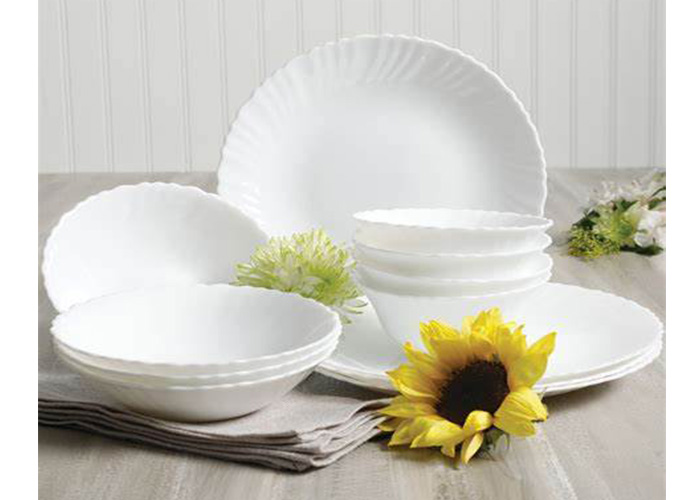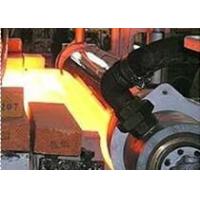Deep Plate, White Glass Plate, 10 Inch, Glass Processing Plant
1. Brief introduction
Glass is a special amorphous inorganic nonmetallic material. The
main component is silicate, a non-crystalline solid with an
irregular structure.
Opal glass is a kind of glass material formed by opactifying
effection produced from tiny particle in fluoride via light
scatting effect.
At present, the opal glass is a regularly used glass product in
daily life.
2. Advantage
- Increase the strength and thermal impacting property of the glass
product.
- Increase the decoration apperance of the glass product.
3. Materials of opal glass
Stable chemical components in the raw materials are very important,
especially the content of fluor and sodium fluosilicated, which
will affect the opacifying effect.
To produce high quality product of opal glass, a high quality of
silica sand shall be reqruied. The main materials to produce opal
glass are below,
| Item | Description |
| 1 | Silica sand |
| 2 | Aluminium hydroxide / Feldspar |
| 3 | Fluor / sodium fluosilicated |
| 4 | Calcite / limestone |
Glass melting is a very complex process, it includes physical,
chemical and physicochemical phenomena and reaction. These
phenomena and reaction lead the mechanical mixed raw materials to
complex melting glass liquid.
The melting process is divided into five stages as following, each
section has its inner connection, affecting each other. If one
stage has imperfect performance, it will influence the next stage,
and ultimately affect the quality of glass.
Physicochemical changes in each glass melting stage:
1. Silicate forming
In this stage, the components of batched materials will produce a
physicochemical solid phase reaction during heating process, in
which the gaseous products will be released from the batched
materials and produce a new opacity sinter ultimately, which is
formed by silicate and SiO2.
2. Glass liquid forming
In this stage, the sinter will be melting and the silicate and SiO2
in sinter will change to flint glass liquid with a plenty of
bubbles. However, its chemical components and character are not
even.
3. Clearing
The glass liquid is continuously heated, and its viscosity is
reduced with plenty of gaseous sundries released, which should
eliminate the visible bubbles with the pool of liquid.
4. Homogenization
The glass liquid is kept at high temperature for a long time, the
ripple eliminates by diffused function and homogenizes as a whole.
The temperature of homogenization can be lower than the clearing
stage.
4. Main equipment of forming device
Shear angle:adjustable between RH30°- LH 90°
Available for S.G, D.G and T.G.
Use continue cam in different section.
Pneumatic mold clamping, usually use 5 bar compressor air for
stronger clamping the mold.
Transfer ware is designed for conveying the glass product from
I.S.machine or press machine to cross conveyor in front of the
annealing lehr quickly and stably, which is especially applicable
to high-speed glass production line.
Cross conveyor is installed in front of annealing lehr for cross
conveying the glass product and works with stacker to push them
into annealing lehr.
Stacker is used for pushing the glass product from the cross
conveyor into annealing lehr. Pushing speed is adjusted by
inverter, quantity of pushing numbers is controlled by digital
counters.
Annealing lehr can be continuous annealing of tableware, bottles,
cans, and other glass products.
Different kinds of packing devices could meet different packing
types of different kinds of domestic glass products.










